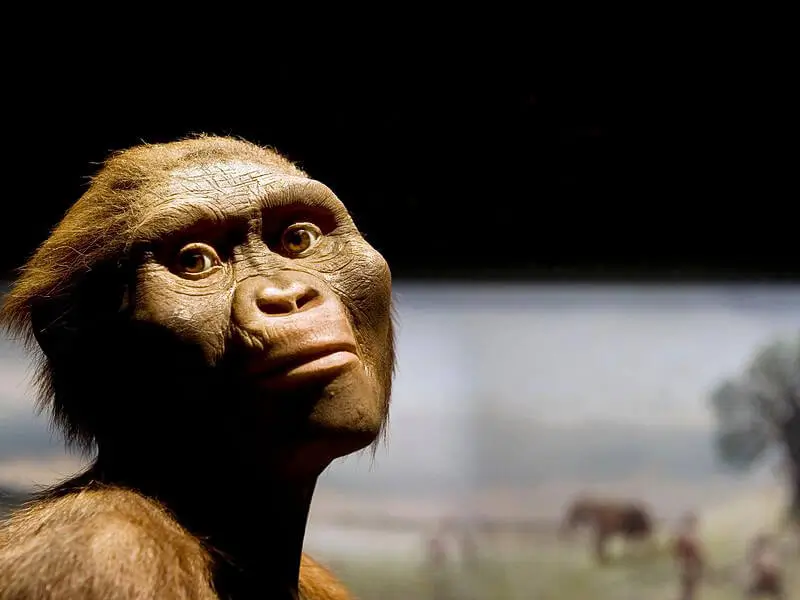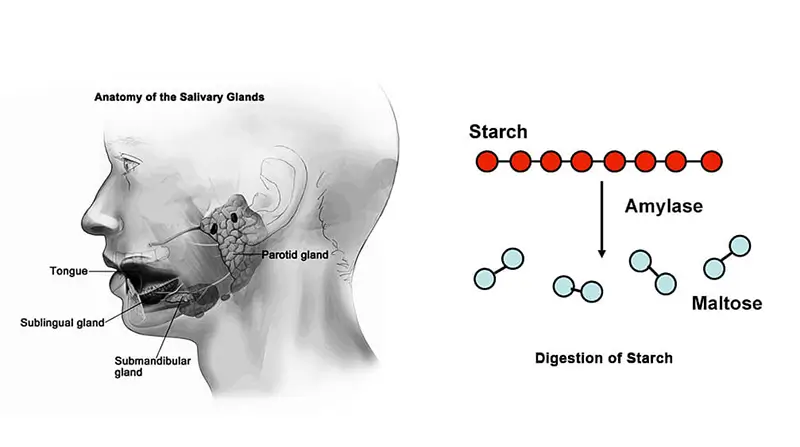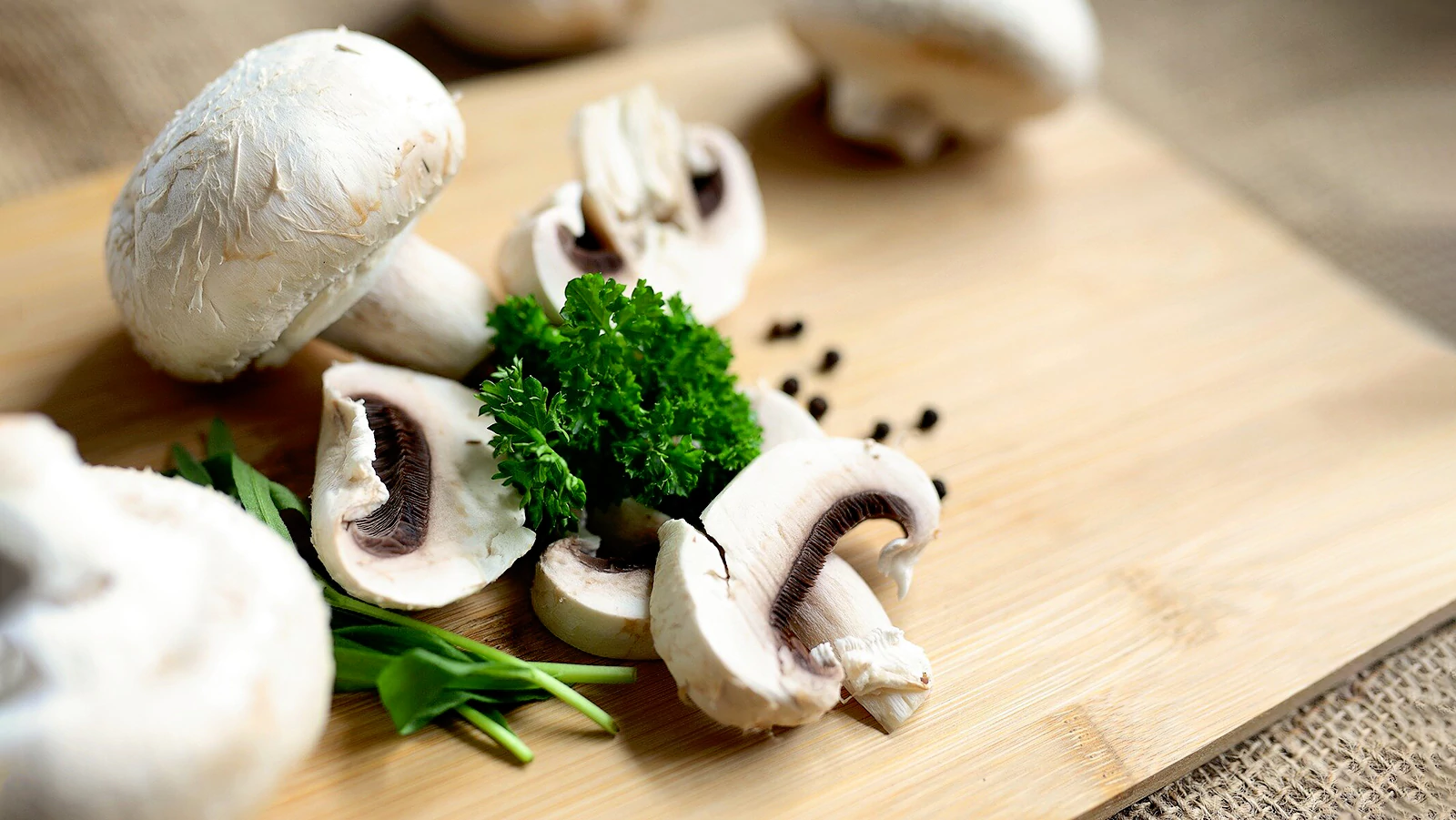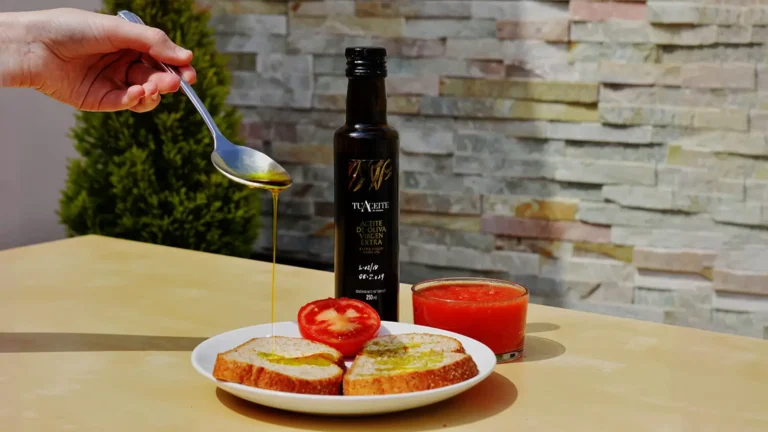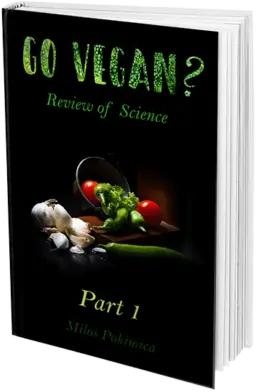ローフードダイエット - 進化の視点
ローフードコミュニティの基本的な信念は、ローフードの食事が最も自然で健康を増進する生き方であるということです。進化生物学は私たちに何を教えてくれますか?
ミロス ポキミカ
によって書かれた: ミロス ポキミカ
医学的に検証した結果 Xiùying Wáng, M.D. 博士。
Updated 6月 9, 2023ビーガンコミュニティにおける最も極端な食事の1つは、ローフードダイエットです。ビーガンコミュニティでは、ローフードダイエットは、可能な限り最も健康的な食事であると称賛されています。ビーガンであることは、ローフードダイエットへの第一歩にすぎないと信じられています。ほとんどのビーガンはそれができないでしょうが、それでも根底にあるメッセージは、ローフードの食事が現存する最も最適で健康的な食事であるということです。それは最も高価なものの一つでもあります。
ローフード食の実践者は、ローフード食は人類の進化の大部分において存在していた食餌の一種であり、今日霊長類が食べている食餌の一種であるため、それが最適な食餌であると主張するでしょう。彼らは、熱により植物化学物質、ビタミン、酵素、ビタミンなどの多くの栄養素が破壊されると主張するでしょう。 抗酸化物質。熱に安定していない栄養素はすべて破壊され、同様の方法でカロリーは豊富だが栄養素が少ない食品が生成されます。 精製砂糖 あるいは石油がそうなります。保護作用のある多くの化学物質やビタミン C などのビタミンは、50℃ を超える温度では安定しません。同時に、調理により突然変異誘発物質が生成される可能性があります。一方で、生の豆やキノコなどの一部の食品は致死的になる可能性がありますが、調理すると非常に健康増進になります。
場合によっては、栄養素は調理後にのみ放出されるため、調理プロセスがなければ適切なレベルで栄養素を吸収することができません。例えばリコピン。トマトの赤い色素は、調理後に熱によって植物の細胞壁が破壊されるときに放出され、脂溶性です。トマトの場合、油を少し加えて調理すると健康増進になります。
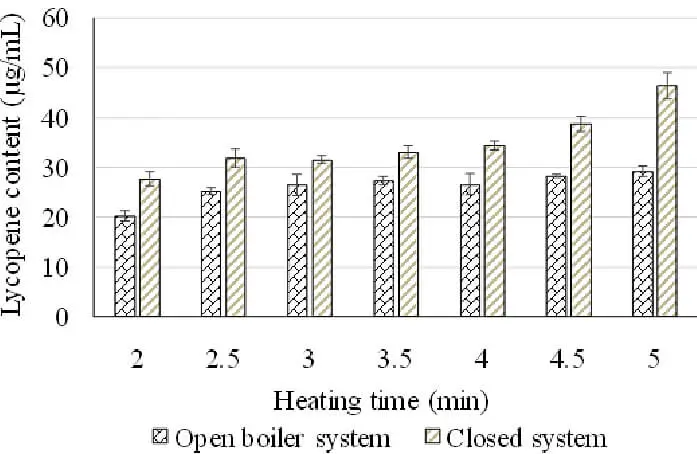
ナッツをローストするとミネラルの吸収は増加しますが、植物化学物質の一部は破壊されてしまいます。調理済み、つまり低温殺菌されたフルーツ ジュースは、単にフルクトースの形でカロリーを抽出して濃縮したものにすぎません。
ほとんどの場合、果物を調理すると抗酸化力が劇的に低下します。 抗酸化物質 果物では高温では安定しません。
蒸しから揚げまでのさまざまな調理方法を比較した研究も数多くあります。栄養科学は現在すべての答えを持っていますが、その答えは人々が望むほど単純ではありません。
この混乱の結果、ローフードダイエットコミュニティ内で広まっている重大な欠陥のある神話が数多く存在します。
たとえば、私たちの体内には限られた数の酵素しかなく、栄養素を吸収するには十分ではないという考えがあります。これを扱うならこれが真実です 牛乳 タンパク質。カゼインは消化に特定の種類の酵素を必要とする複雑なタンパク質であり、哺乳類は子供の頃にのみ乳を飲むため、これらの酵素は将来的にはオフになります。乳たんぱく質は、たとえ人間が消化できなくても、簡単には消化されません。 乳糖不耐症。ボディビルダーは睡眠中であっても常にタンパク質を補給することを好み、この特別な理由から就寝前にミルクプロテインを飲みます。
一方、植物酵素のほとんどは、調理によって破壊されなくても、胆汁酸によって破壊されます。それはより複雑なトピックです。
ローフードダイエットコミュニティの基本的な信念は、人間は自然とバランスをとって生きるべきだということです。彼らは、それが最も自然で健康を増進する生き方であると信じています。
ローフードダイエットの主な問題の 1 つは、脳が大量のエネルギーを消費することです。もし私たちがでんぷんやその他の高カロリー食品を避け、より栄養価の高い食品を食べれば、生きたいならもっと多くの食品を消費しなければならなくなります。別の選択肢は、フルーツジュースの形で濃縮砂糖を飲むか、果物全般を食べ、ナッツや種子などの高脂肪源を食べることです。
これは健康増進に効果があるでしょうか?
証拠によると、食べ物の調理は190万年前には人類文化の一部であった可能性があります。この時期に、ホモ・エレクトスの歯のサイズは大幅に減少しました。これは、彼がより柔らかい食事を採用し始めた場合にのみ可能です。これは料理の使い方のせいかもしれません。
料理は古い食べ物を美味しくするだけではありません。また、以前はおいしくなかった食べ物も、新たなカロリー源になります。たとえば、私たちにとって生の肉やその他の動物製品を食べることは死刑宣告です。人々が牛乳などの動物性食品を含むローフードダイエットを実践していたいくつかの事例の報告です。 結核、ブルセラ症、ジフテリア、猩紅熱、Q 熱、胃腸炎などのいくつかの病気は、生の乳製品を介して伝染します。
本当の真実は、焼かなければ栄養価の高い塊茎の多くが硬すぎて消費できないということです。
調理により質の高い食事が可能になったため、腸のサイズが大幅に減少しました。これは化石記録で見ることができるものであり、それ自体が食事の質の向上を証明しています。より多くのカロリーとより小さな消化管は、利用できる自由カロリーがより多くあることを意味し、それは脳にとってより多くの量を意味し、脳のサイズはさらに大きくなります。
消化しにくい植物源を調理することは、私たちが人間になることを可能にした適応の大きな部分を占めていました。
ハーバード大学のエドワード・O・ウィルソンは、人間の脳の拡大についていくつかの計算を行いました。結論としては、ホモ・サピエンスが出現するまでの200万年間、脳の大きさは10万年ごとに大さじ1杯ずつ成長し、その後脳の成長が止まったというものでした。
古典的な考え方では、初期の人類は森林環境からサバンナ環境への移動を余儀なくされ、新しい環境でより一般的となるより硬くてタフな食料に移行することで適応しなければならなかった、というものです。樹上性動物でない場合、二足歩行は最も効果的な歩行形態であるため、開放性は二足歩行の選択的な利点も説明します。
アウストラロピテクスを見ると、彼は本当に巨大な顎と大臼歯を持っていました。アウストラロピテクス類の大きくて厚いエナメル質の歯は、硬い食べ物を含んだ食生活を示唆しています。この場合に考えられるシナリオは 2 つだけです。比較的大きな種子の丈夫な殻を開けるために歯を使ったのかもしれません。あるいは、もう一つのよりもっともらしいシナリオは、デンプンが豊富な食べ物に焦点を当てるために歯を使ったというものです。多くの植物種は、球根や球茎などの地下貯蔵器官 (USO) と呼ばれる地下部分にエネルギーを蓄えています。計画は生きたいが食べられたくないので、防御機構を持っています。これらのメカニズムには、毒素、貝殻などの物理的障壁、消化されにくい繊維状物質などが含まれます。調理は基本的に、植物が持つ可能性のある保護層をすべて破壊します。進化論的に言えば、
植物では、炭水化物はエネルギー貯蔵として、または油と同様に構造的機能として機能します。それは植物が太陽光から作り出し、私たちが消費したいと考えている蓄えられたエネルギーです。予備エネルギーは植物のさまざまな部分に蓄えられ、通常は種子やナッツ、特に豆には発芽のためのエネルギーとして役立ちます。特定の果物のほか、塊茎、根、根茎などの地下貯蔵器官にもそれらがあります。
食用の根と塊茎は、純粋なデンプンの乾燥重量の最大 80% を占めるため、非常にエネルギー密度が高くなります。もう 1 つの利点は、地面に自然に生えているため、安定した状態を保ち、放置しても腐らず、長期間にわたって必要に応じて収集できることです。USO を乾燥させることもできますが、初期の人類がこの技術を適用できるレベルの知能を持っていたかどうかは疑問です。入手可能性とエネルギー密度のおかげで、USO は初期の人類にとって最も不可欠な食料源の 1 つになったと提案されています。デンプンが豊富な USO の追加は、ヒト族のさらなる進化と新しい生息地への拡大にとって重要なステップでした。デルタ地帯などの USO が豊富な水生生息地は、初期の人類がサバンナの生息地に適応する際の中間ニッチとして提案されています。これら 2 つの理論 (重要な食料源としての大きな種子と USO) は、必ずしも両立しないわけではありません。ヒト科の種が 1 種類の食物だけを消費したのかどうかは非常に疑わしいです。頭蓋歯の形態に関するいくつかの調査では、アウストラロピテクス科であっても、個体間での食事の有意な変動が示唆されています。また、考慮すべき重要なことは、比較的めったに消費されない食物であっても、好まれる食物が入手できなかった特定の期間においては生存に不可欠であった可能性があるということである。
人間が制御した火災の最も古い本物の証拠は、イスラエルで40万年前に遡ります。他の未確認のサイトでは、150 万年前まで遡ることができます。一部の科学者は、この時代にはホモ・エレクトスの歯のサイズが大幅に減少していたため、190万年という早い時期には、食物の調理が人類文化の一部であった可能性があると示唆しています。これは、彼がより柔らかい食事を採用し始めた場合にのみ可能です。
もしホモ・エレクトスが火の使い方をマスターしていたことが考古学的な記録から確認されているのであれば、190万年前のホモ・エレクトスの起源は、重要な転換期として利用されるべきである。ホモ・エレクトスは顔が小さく、歯と顎が小さく、脳が大きく、腸管が短かった。これらはすべて、塊茎を焙煎して作ったより質の高い食事のおかげである。H.エレクタスの脳の大きさは拡大し始め、ヒトの身体はより背が高く、より現代的になった。でんぷんを豊富に含むUSOの調理が私たちの生理学に影響を与え、行動適応に基づく採食と組み合わさって、脳の発達をさらに大きくしたのである。火は食べ物の分子構造にブレーキをかけ、ある意味で消化のプロセスをシミュレートする。従って、火は単に使えない食物を消化可能にするだけでなく、消化可能な食物をより栄養価の高いものにするのである。火によってカロリーが利用しやすくなるため、それまで食べていたのと同じ食品から、より多くのカロリーを摂取できるようになるのだ。でんぷんは、生の結晶の状態だと消化が遅く不完全だが、調理すると効率よく消化される。例えばジャガイモを生で食べるのは決して良い考えではない。
デンプンを多く含む植物性食品を調理することは、ヒトの系統において唾液アミラーゼ活性の増加と共進化した。唾液中のα-アミラーゼ濃度が非常に高いという点で、ヒトは珍しい。遺伝的な意味では、これはAMY1遺伝子の複数コピーによるものである。霊長類の中で、AMY1遺伝子の複数コピーが確認されているのはサピエンスだけである。ヒトには2種類のαアミラーゼがあり、1つは唾液腺で発現し、もう1つは膵臓で発現する。唾液アミラーゼは、口腔内での咀嚼時に直ちにデンプンの加水分解を開始する。幼い乳児の膵アミラーゼ活性はごくわずかである。離乳後、非乳食が食事に導入されると、デンプン消化の大部分(おそらく50%)が唾液アミラーゼによって達成される。
対照的に、成人では、デンプンは主に十二指腸で消化されます。これは、複数の DNA レトロウイルス挿入の結果であると考えられます。最初は4,300万年前、その後、3,900万年頃に2回目の上流レトロウイルス挿入を経験しました。これは、果物からのフルクトースやナッツや種子からの脂肪を主とする食事から、よりデンプンベースの食事へと移行しつつあったため、必要な適応でした。中期更新世における人類の脳サイズの急速な成長には、あらかじめ形成されたグルコースの供給量の増加も必要でした。でんぷんが豊富な植物性食品を調理すると、この適応がさらに進み、唾液アミラーゼ活性の増加と共進化しました。でんぷんが豊富な植物性食品を調理することなく、より吸収が良くなり、食べられない植物を食べることができるようになります。現代人のカロリーに対する高い需要が満たされる可能性は低いです。エネルギー密度の高いでんぷん質の植物性食品を定期的に摂取することは、鮮新世後期から更新世前期にかけての脳の成長を説明する追加のエネルギー源の必要性に対する適切な解決策を与えてくれます。
この科学に詳しくない人のほとんどは、現代人は石器時代に火を発見し、現代人の脳サイズの増大は人類の祖先が肉食をしていた結果であるという基本的な考え方をどういうわけか作り上げました。
現実には、ホモ・エレクトスが火を発見し、でんぷんを調理し、最適な採餌方法を考えるのに苦労したことが私たちの知性を生み出しました。
USOを焙煎することで、私たちは骨髄ではなく人間になったのです。人間の食事ではないローフードダイエットは必要ありません。ローフードダイエットは霊長類の食事であり、ホモ・エレクトス以前の人類の食事です。人間の最適な食事は 30 ~ 60 パーセントが生食です。文字通り、料理は私たちを人間たらしめるものなのです。少なくとも、H. エレクトスと私たちの遺伝的差異は 0.5 ~ 1 パーセントです。
参考文献:
本からの抜粋ポキミツァ、ミロス ビーガンに行きますか?科学の復習パート 1. Kindle版、 アマゾン、2018年。
- パレルモ、マリアントネッラ 他 「野菜の植物化学物質含有量に対する調理の影響」 食と農の科学ジャーナル 巻。94,6 (2014): 1057-70。 土井:10.1002/jsfa.6478
- Perdomo, F et al. "Influencia del procedimiento culinario sobre la biodonibilidad del licopeno en el tomate" [トマト中のリコピンの生物学的利用能に及ぼす調理手順の影響]。 病院の栄養 巻。27,5 (2012): 1542-6。 土井:10.3305/nh.2012.27.5.5908
- ヤダブ、SK、S セーガル。「ほうれん草(Spinacia oleracia)とアマランサス(Amaranthus tricolor)の葉のアスコルビン酸とベータカロチン含有量に対する家庭処理の影響」 人間の栄養となる植物性食品(オランダ、ドルドレヒト) 巻。47,2 (1995): 125-31。 土井:10.1007/BF01089261
- ヒメネス・モンレアル、AM 他 「野菜の抗酸化作用に対する調理方法の影響」 食品科学ジャーナル 巻。74,3 (2009): H97-H103。 土井:10.1111/j.1750-3841.2009.01091.x
- ナテラ、ファウスタ、他 「電子レンジと伝統的な調理法: 7 種類の野菜の抗酸化能力とフェノール化合物の含有量に対する調理の影響」 食品生化学ジャーナル、Wiley-Blackwell、2010 年 8 月、p. いいえ。 https://doi.org/10.1111/j.1745-4514.2009.00316.x.
- グエン、トゥイ、ゴ、タイ。(2018年)。gac (Momordica cochinchinensis) とパパイヤ (Carica papaya) の混合ジュースの品質と抗酸化活性に対する熱処理の影響。 1. 41-45.
栄養と健康について何か質問はありますか?
ぜひご意見をいただき、次回の投稿でお答えしたいと思います。皆様のご意見とご意見に感謝しており、すぐにご連絡をお待ちしております。私もあなたを招待します フォローする Facebook、Instagram、Pinterestでダイエット、栄養、健康に関するコンテンツをご覧ください。そこにコメントを残して、他の健康愛好家とつながり、あなたのヒントや経験を共有し、私たちのチームやコミュニティからサポートや励ましを得ることができます。
この投稿があなたにとって有益で楽しいものであり、学んだ洞察を生かす準備ができていることを願っている。この投稿が役に立ったと思われた方は シェアする 友人や家族など、その恩恵にあずかれるかもしれない人たちと一緒に。誰が健康の旅にガイダンスやサポートを必要としているかわからないのですから。
– あなたはおそらくそれも好きでしょう –

栄養について学ぶ
ミロス・ポキミカは、自然医学の医師、臨床栄養士、医療健康と栄養のライター、栄養科学アドバイザーです。書籍シリーズの著者 ビーガンに行きますか?科学の復習また、自然健康サイト「GoVeganWay.com」を運営している。
医療上の免責事項
GoVeganWay.com では、最新の栄養と健康関連の研究のレビューをお届けします。提供される情報は著者の個人的な意見を表すものであり、専門的な医学的アドバイス、診断、または治療に代わることを意図または暗示するものではありません。提供される情報は情報提供のみを目的としており、資格のある医師または医療提供者の相談、診断、および/または治療に代わるものとして機能することを意図したものではありません。GoVeganWay.com で読んだことや GoVeganWay.com を通じてアクセスしたことを理由に、専門家の医学的アドバイスを無視したり、医療治療を受けるのを遅らせたりしないでください。
認可された医師に相談する前に、GoVeganWay.com で読んだ内容の結果としてライフスタイルの変更や変更を決して適用しないでください。
医療上の緊急事態が発生した場合は、直ちに医師または 911 に電話してください。GoVeganWay.com は、内部で言及されている特定のグループ、組織、検査、医師、製品、手順、意見、またはその他の情報を推奨または承認しません。
編集者のおすすめ –
ミロス・ポキミカは健康・栄養ライターであり、栄養科学アドバイザーである。書籍シリーズの著者。 ビーガンに行きますか?科学の復習また、自然健康サイト「GoVeganWay.com」を運営している。
最新記事 -
トップヘルスニュース — ScienceDaily
- Scientists reverse Alzheimer’s in mice and restore memory12月 24, 2025 に
Alzheimer’s has long been considered irreversible, but new research challenges that assumption. Scientists discovered that severe drops in the brain’s energy supply help drive the disease—and restoring that balance can reverse damage, even in advanced cases. In mouse models, treatment repaired brain pathology, restored cognitive function, and normalized Alzheimer’s biomarkers. The results offer fresh hope that recovery may be possible.
- Why consciousness can’t be reduced to code12月 24, 2025 に
The familiar fight between “mind as software” and “mind as biology” may be a false choice. This work proposes biological computationalism: the idea that brains compute, but not in the abstract, symbol-shuffling way we usually imagine. Instead, computation is inseparable from the brain’s physical structure, energy constraints, and continuous dynamics. That reframes consciousness as something that emerges from a special kind of computing matter, not from running the right program.
- This tiny peptide could help stop brain damage after injury12月 24, 2025 に
A four–amino acid peptide called CAQK has shown powerful brain-protective effects in animal models of traumatic brain injury. Delivered through a standard IV, it zeroes in on injured brain tissue, calming inflammation and reducing cell death while improving recovery. The peptide worked in both mice and pigs, whose brains are closer to humans in structure. Researchers are now preparing to move toward early human clinical trials.
- These nanoparticles kill cancer cells while sparing healthy ones12月 24, 2025 に
Researchers have created tiny metal-based particles that push cancer cells over the edge while leaving healthy cells mostly unharmed. The particles work by increasing internal stress in cancer cells until they trigger their own shutdown process. In lab tests, they killed cancer cells far more effectively than healthy ones. The technology is still early-stage, but it opens the door to more precise and gentler cancer treatments.
- Your roommate’s genes may be shaping your gut bacteria12月 24, 2025 に
Scientists studying thousands of rats discovered that gut bacteria are shaped by both personal genetics and the genetics of social partners. Some genes promote certain microbes that can spread between individuals living together. When researchers accounted for this social sharing, genetic influence on the microbiome turned out to be much stronger than previously thought. The study suggests genes can affect others indirectly, without DNA ever being exchanged.
- MIT scientists strip cancer of its sugar shield12月 23, 2025 に
Scientists at MIT and Stanford have unveiled a promising new way to help the immune system recognize and attack cancer cells more effectively. Their strategy targets a hidden “off switch” that tumors use to stay invisible to immune defenses—special sugar molecules on the cancer cell surface that suppress immune activity. Early tests show it can supercharge immune responses and outperform current antibody therapies.
- Scientists find a weak spot in deadly fungus that shut down hospital intensive care units12月 23, 2025 に
A deadly hospital fungus that resists nearly every antifungal drug may have an unexpected weakness. Researchers discovered that Candida auris activates specific genes during infection to hunt for nutrients it needs to survive. This insight came from a new living-host model that allowed scientists to watch the fungus in action. The findings could eventually lead to new treatments or allow current drugs to be repurposed.
パブメッド、 #ビーガンダイエット –
- Comparing diet-related attitudes, perceptions, and behaviors of vegan and omnivorous adults: results from a cross-sectional survey study in Germany12月 22, 2025 に
CONCLUSION: The findings are consistent with and build on existing research on cognitive and behavioral patterns related to a vegan diet, while at the same time yielding some additional insights. In particular, the results on significant differences in the risk-benefit perception of a vegan diet, as well as on motivations and influences regarding the decision to follow a vegan diet provide an important basis for the development of public health interventions and a foundation for further […]
- Assessment of vitamin A, vitamin B2, vitamin B12, vitamin K, folate, and choline status following 4 months of multinutrient supplementation in healthy vegans: a randomised,…12月 19, 2025 に
CONCLUSION: A multinutrient supplement containing 82 µg of vitamin B(12) per day significantly positively affected vitamin B(12) blood biomarkers in healthy vegans.
- Exploring the synergistic potential of pH and ultrasonication on the functional properties of pea and lentil protein isolates and its formulation in food product12月 15, 2025 に
The substitution of meat proteins with plant-based proteins from various sources is often motivated by nutritional considerations. However, the inherent limited solubility of plant proteins, which results in suboptimal techno-functional properties, remains a persistent challenge in food formulation. The purpose of this study was to utilize unique properties of pea (Pisum sativum L.) and lentil (Lens culinaris) through ultrasonication and pH variation in order to develop a stable and […]
- Healthful and Unhealthful Plant-Based Diets and Their Association with Cardiometabolic Targets in Women Diagnosed with Breast Cancer: A Cross-Sectional Analysis of a Lifestyle Trial12月 11, 2025 に
CONCLUSIONS: Maintaining cardiometabolic risk factors within normal ranges is clinically relevant in BCS, and this may be more likely when a plant-based diet is consumed, especially if low in unhealthy plant foods.
- Functional and Nutritional Properties of Lion’s Mane Mushrooms in Oat-Based Desserts for Dysphagia and Healthy Ageing12月 11, 2025 に
Hericium erinaceus (Lion’s Mane mushroom) is a medicinal species recognised for its neuroprotective and antioxidant properties. This study investigated its potential as a functional ingredient in oat milk-based desserts formulated for individuals with dysphagia. Freeze-dried Lion’s Mane powder (LMP), containing high-quality protein (~16%, amino acid score 88%), dietary fibre (~31%), and phenolic compounds (72.15 mg GAE/g), was incorporated at varying levels using gelatin or iota-carrageenan […]
ランダムな投稿 –
おすすめの投稿 -
PubMed の最新情報、 #植物ベースの食事 –
- The potential of immature jackfruit in meat analoguesによって Anne C M Swinkels 12月 24, 2025 に
The jackfruit, the fruit of the jackfruit tree ( Artocarpus heterophyllus ), is a unique tropical fruit. While sweet and fruity in its ripe form, in its immature form, the jackfruit flesh mimics the texture of meat, making it an increasingly popular plant-based meat analogue. To reach its full potential as an ingredient for meat analogues, a better understanding of the immature fruit properties in relation to its behaviour in food products is required. This review focuses on immature […]
- The 3V score and joint associations of low ultra-processed food, biodiverse and plant-based diets on colorectal cancer risk: results from the European Prospective Investigation into Cancer and…によって Emine Koc Cakmak 12月 24, 2025 に
BACKGROUND: Diet may modify colorectal cancer risk. We investigated the associations of three dietary patterns, ultra-processed food (UPF) consumption, healthy plant-based food consumption, and food biodiversity, separately and combined into a “3V” score with risk of colorectal cancer.
- Lifestyle-Based Approaches to Cancer Prevention and Treatment: Diet, Physical Activity, and Integrative Strategiesによって Gianpiero Greco 12月 24, 2025 に
Cancer remains a leading global cause of morbidity and mortality. Modifiable lifestyle factors, including avoidance of tobacco use and excessive ultraviolet radiation, healthy dietary patterns, regular physical activity, and weight management, play key roles in prevention and care. This narrative review synthesizes evidence on lifestyle-based interventions influencing cancer risk, treatment tolerance, and survivorship. A literature search was conducted in PubMed and Scopus, supplemented by…
- Public Healthによって Julia L Sheffler 12月 23, 2025 に
CONCLUSIONS: An MKD may provide unique benefits for ADRD risk reduction compared to the MEDDIET, and the ICAN program demonstrates feasibility to provide the tools necessary to allow older adults to implement either of these diets into their lifestyle.
- Public Healthによって Debora Melo van Lent 12月 23, 2025 に
CONCLUSION: Higher MIND diet scores associated with decreased all-cause dementia risk and being alive and dementia free at age 80. We encourage clinical trials to examine the MIND diet in relation to dementia related outcomes such as amyloid and tau to elucidate whether a causal relationship between the MIND diet and dementia pathologies exists.
- Public Healthによって Emily A Johnston 12月 23, 2025 に
CONCLUSION: Mean observed MIND diet and Veggie Meter scores show less than desirable intake of carotenoid-rich foods for reduction of AD/ADRD risk among participants. The majority of participants take dietary supplements, and few consume a diet supportive of brain health. Few cohort studies include subjective and objective diet assessments with actionable feedback for participants. These preliminary findings emphasize the need for further research into dietary interventions for prevention or…


